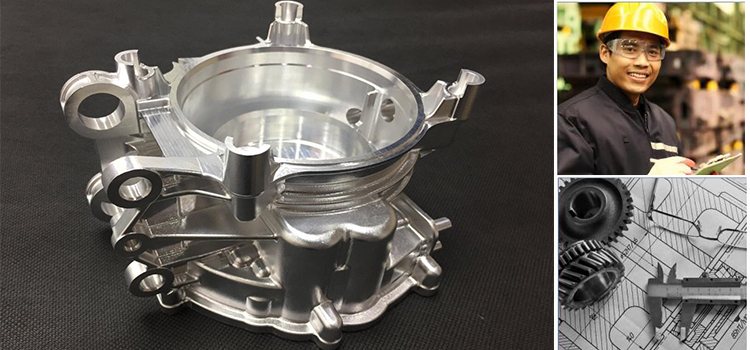Dies, or die cast molds, are made from alloy tool steel in at least two sections: the fixed die half (cover half), and the ejector die half. When the die casting machine closes, the two die halves are locked and held together by the machine’s hydraulic pressure. During the die casting process, molten metal is injected at high velocity into the mold (die) cavity to form a die cast part.
The customer’s product design requirements directly affect the size, type, features, and cost of the required tooling. The items involved in the tooling decision include the number of cavities, number of core or slide requirements, weight of the die, machining, finish requirements, polishing and plating to name just a few.
Tooling for Die Casting
There are various types of die casting dies and each serves a critical need for the customer. The choice of which type of die casting die the customer requires is usually determined by the following:
• Size of the part to be cast
• Volume of parts required
• Requirements for “ family” sets of parts
• Desirability of core slides
• Requirements for cast-in inserts
Cast Features & Die Elements
The features that are required of a cast part determine the complexity of the die. The simpler the part, the lower the cost of the die casting tool. Most commonly used materials for aluminum tools are H-10, H-11, and H-13 tool steels. For the proper design of production tooling, pressure tightness, secondary machining and surface finishing specifications must be understood in detail. Areas of the casting subject to machining must be fully discussed at the outset, so that the die can be designed to reduce to an absolute minimum the presence of porosity in those areas. Cosmetic surface requirements for the casting.

Contact: Amy Sales Manager
Phone: +86 13422185596
Tel: +86 (0755) 2105 2909
Email:info@kintec-machining.com
Add: No. 191 Qingbin Road, Qingxi Town, Dongguan 523648, China